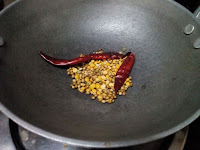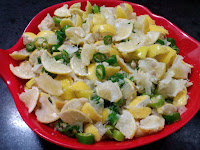Tomato rice
Tomato rice is in famous in Tamilnadu. There are many other varieties of rice dishes in Tamilnadu such as tamarind rice, lemon rice, pudhina rice, coconut rice, curry leaves rice etc...I will be trying these later...
I had made this one before too when one of my friend in Chennai told about this, many years before. At that time it didnot come out well. Something was not correct in that one!
Anyways, I tried this now again since its simple and easy to make. Children too can carry it for lunch to school without any side dishes. Tomato is the main ingredient in it ....
Health benefits of Tomato:
Its a great source of Vitamin C and Vitamin K. They are also a very good sources of Vitamin A, Vitamin B6, foliate etc.
hence, tomatoes help to improve eye sight, stomach health and reduce blood pressure.
It also gives relief from diabetics, skin problems and urinary tract infections. It can also increase digestion, stimulate blood circulation, reduce cholesterol levels and protect the kidneys etc.
Ingredients of tomato rice
Rice - 1 cupTomato - 3 nos
Urad dal - 1/2 tpn
Chana dal - 1 tpn
Coriander seeds - 1 tpn
Asafoetida - a bit
Dry red chilly - 2 nos
Mustard seeds - 1/2 tpn
Onion - 2 nos
Green chillies - 2 nos
Curry leaves - 4-6nos
salt as needed
 Process to make tomato rice
Process to make tomato rice
Take a pan and roast Urad dal, Chana dal, Coriander seeds in a low flame. Roast it till they becomes light brown in colour. Switch off the flame allow it to cool for some times.Once this cools down, grind these spices in a mixie.
Keep it aside.
Chop Onions , tomatoes and green chillies. Keep it aside.
Heat oil in a pan. Put the Mustard seeds and let it splutter.
Then add chopped onions, chopped green chillies, curry leaves etc.
Add a little salt and saute these till the onion becomes light brown in colour.

Then add the chopped tomatoes in it.
Allow it to fry for sometimes till the oil leaves the sides of the pan.

After that add the spices powder and mix thoroughly.

Lastly add the cooked rice and mix it well.
Tomato Rice (Thakkali sadham) is ready.
#tomatorice, #tamilrecipes, #vegetarianrecipes, #southindianrecipes, #kidsrecipes




















































